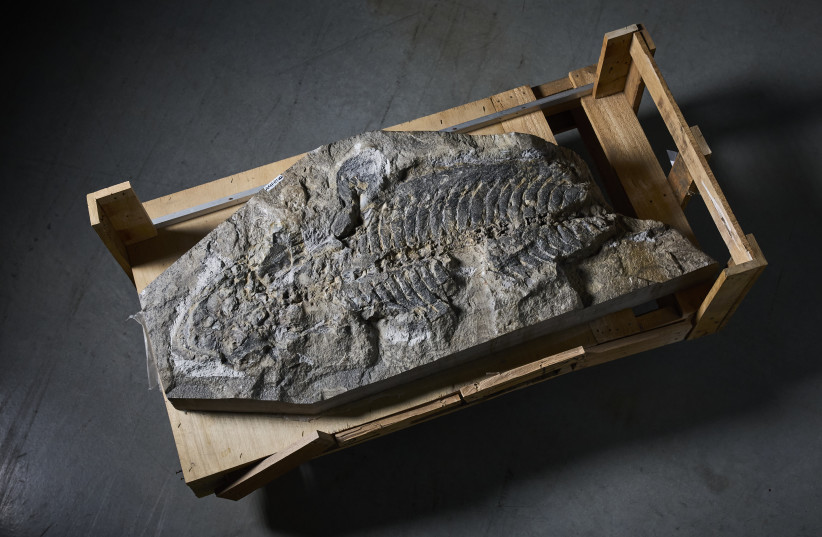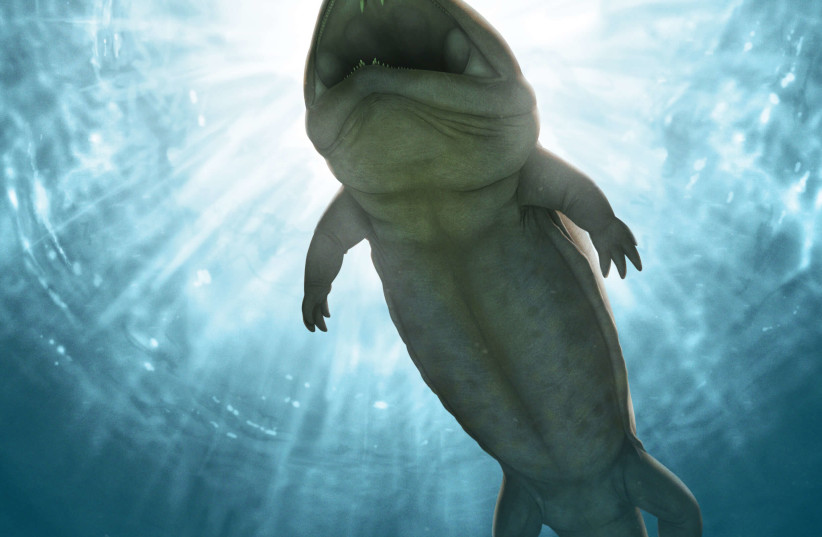The creature inhabited fresh waters in what is now known as the Sydney Basin during the Triassic period. It likely fed on ancient fish like Cleithrolepis but little else is known.

Arenaerpeton supinatus(photo credit: Australian Museum)
The fossil of an Arenaerpeton supinatus from 240 million years ago that was discovered in the 1990s has received new recognition, after finally being formerly named and categorized by scientists from the University of New South Wales and the Australian Museum, according to an academic article published on August 3.
The peer-reviewed article, published in the Journal of Vertebrate Paleontology, detailed the investigations surrounding the fossil.
The remains of the giant lizard-like creature had originally been found by a chicken farmer in a quarry and later donated to the Australian Museum in Sydney.

The Arenaerpeton supinatus
Arenaerpeton supinatus translates to ‘supine sand creeper.’ It grew to be up to 1.2 meters (4 feet) long from head to tail.
Lachlan Hart, a paleontologist working for the Australian Museum said in a press release that the fossil is an incredible discovery because the entire skeleton was found and the outlines of the skin remained.

“This fossil is a unique example of a group of extinct animals known as temnospondyls, which lived before and during the time of the dinosaurs,” Hart went on to explain. “We don’t often find skeletons with the head and body still attached, and the soft tissue preservation is an even rarer occurrence.”
The creature inhabited fresh waters in, what is now known as, the Sydney Basin during the Triassic period. Hunt explained that it likely fed on ancient fish like Cleithrolepis but little else is known.
“Superficially, Arenaerpeton looks a lot like the modern Chinese Giant Salamander, especially in the shape of its head,” Hart said. “However, from the size of the ribs and the soft tissue outline preserved on the fossil we can see that it was considerably more heavyset than its living descendants. It also had some pretty gnarly teeth, including a pair of fang-like tusks on the roof of its mouth.”

“The last of the temnospondyls were in Australia 120 million years after Arenaerpeton, and some grew to massive sizes. The fossil record of temnospondyls spans across two mass extinction events, so perhaps this evolution of increased size aided in their longevity.”

“This is one of the most important fossils found in New South Wales in the past 30 years, so it is exciting to formally describe it,” said co-author Dr. Matthew McCurry. “It represents a key part of Australia’s fossil heritage.”